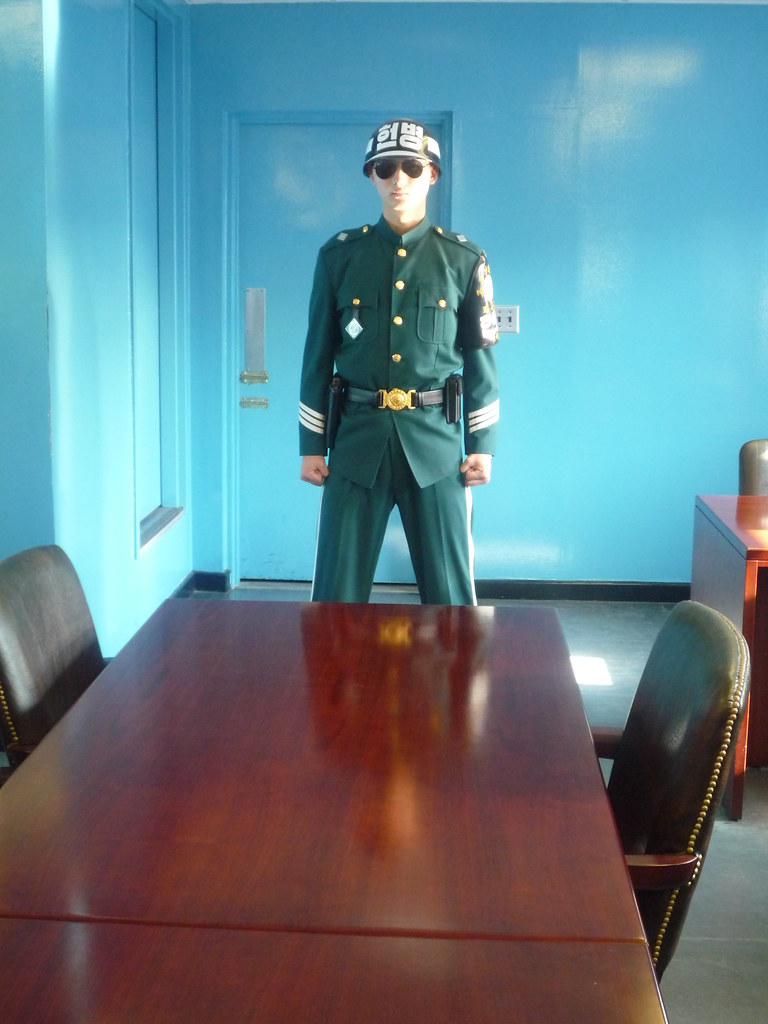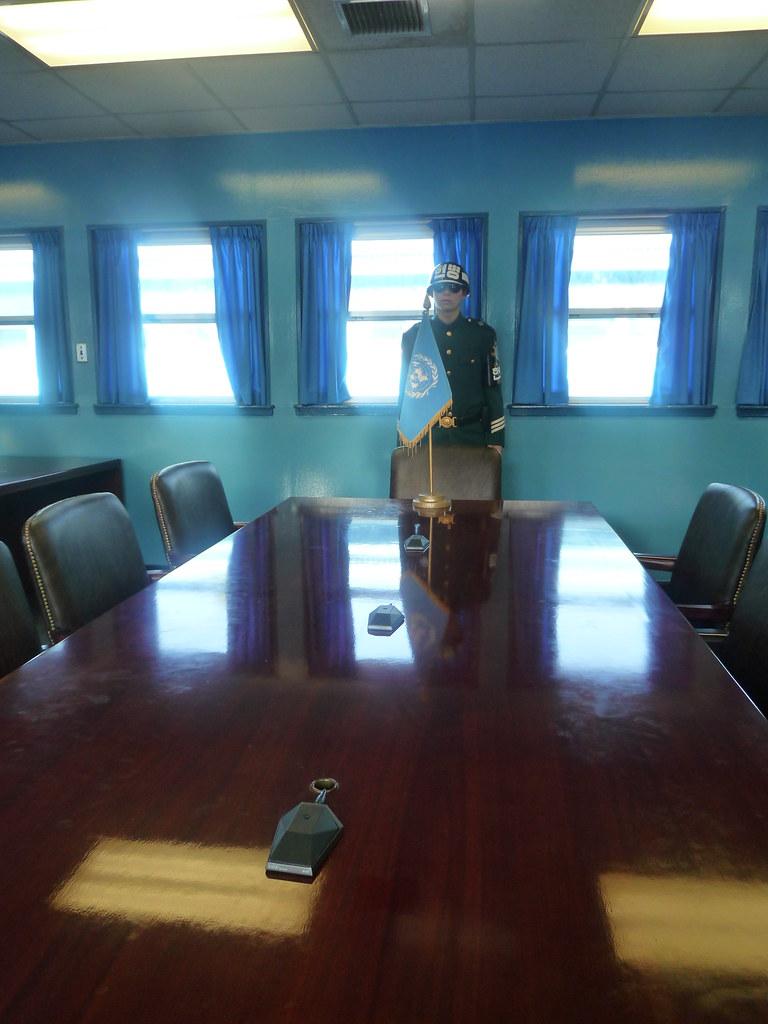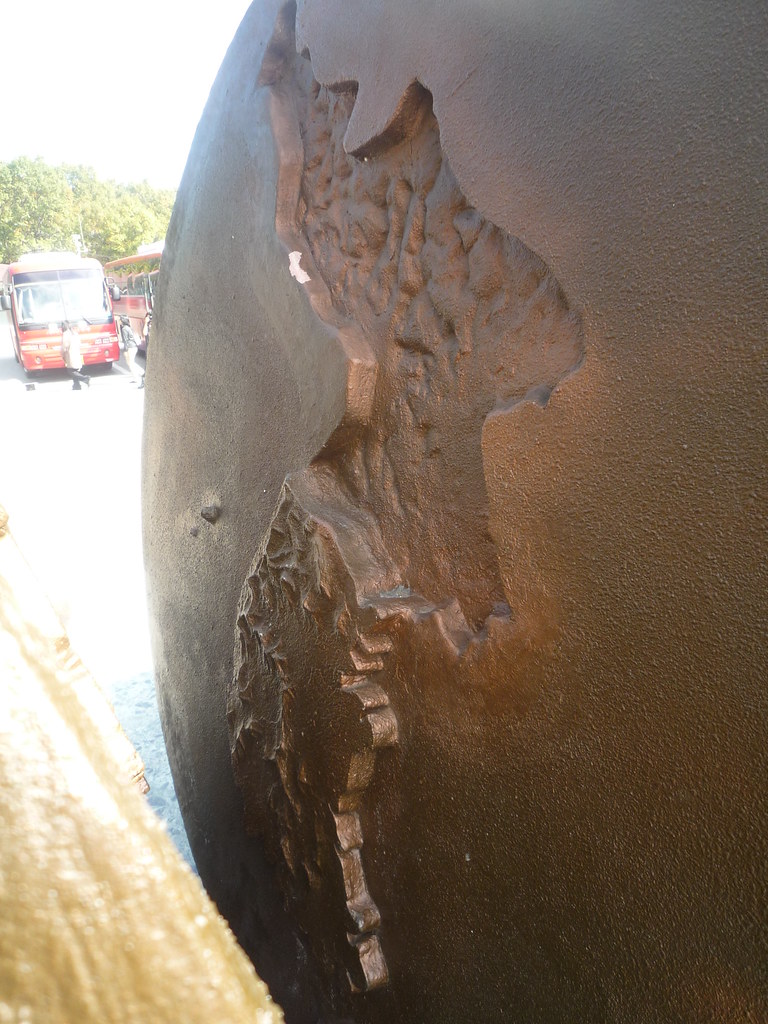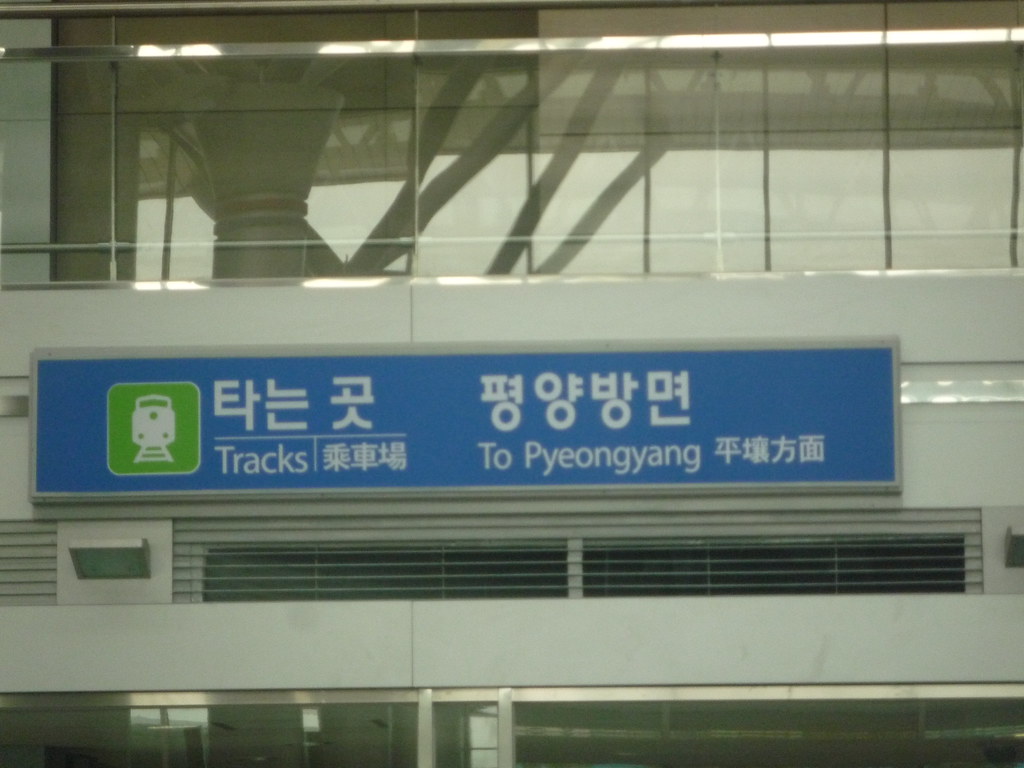Sadly I missed the actual Renn Fayre due to being in the wrong hemisphere, but I had something of an approximation at the Hi Seoul festival for my three day weekend. (By the way, Stacia's photos made me miss the hell out of you all.) Ok, there's no real substitute for Renn Fayre, but this was way closer than one would expect.
Buddha's birthday was on Saturday, so we had Friday, though apparently all the festivities for the holiday took place the Sunday before Buddha's birthday. Who knew? On Friday, John, Will, and I took the slow train to Suwon, a smallish city South of Seoul. We didn't have seats, so we had to stand in the food car, which also had video game stations, karaoke rooms, and drunk middle-aged men, and hence that car of the high speed train was the epitome of Korea. We weren't as hobocore as this guy:
 We were in Suwon primarily to see the fortress wall that surrounds the center of the city. The city recognized that the wall is one of its major draws, judging by even the fences being shaped like the wall.
We were in Suwon primarily to see the fortress wall that surrounds the center of the city. The city recognized that the wall is one of its major draws, judging by even the fences being shaped like the wall.

We walked from the train station to the wall along a ridge with good views of the city:

The wall itself had periodic outposts and 'secret gates', which were quite visible. Also, it was awesome.




People were actually allowed to ring this rather old bell, which felt like it shook us to the core.

Within the walls there was an old palace in the valley between well protected hills.

The outposts had nice view of the wall running through the city:






I was a fan of the ominous black and red flags (Will and John are in the foreground).


The main gate looked pretty defensible:



The wall 's prettiest area was where it passed over a stream:





We were there too late to participate in the dangerously-close-to-the-road-and-major-tourist -attractions archery, but we were in time to see this dog:


Suwon's historical museum had reconstructions of the tools used to build the walls:


There is a great bike path along the river through the center of town, though there are sections where only the penitent cyclist can pass, apparently:


In the shadow of the end of the extant wall there was a cluster of people selling vegetables, fruits, spices, etc. Such clusters are pretty much everywhere in Korea.

The main shopping and night life district seemed to be clustered around the old South gate.





Across the street there was a shop so small that the retailer barely fit inside. In America we would never think of using that tiny triangle of a space as a shop...

I'd love to live inside a fortress, and there are lots of towers overlooking parks that would be wonderful for hanging out, so if I come back to Korea I'll probably look for a job there. Also, Suwon is infinitely more centralized and alive than Daejeon. Daejeon always feels like a Sunday, whereas Suwon was vibrantly pulsing the whole time we were there (3-7pm). It's far enough away from Seoul to avoid most of the pollution, but it is still on the metro system, despite being 48km away.
We took the subway to Itaewon, the foreigner district in Seoul. After some searching we ate real tacos. It can be hard to find remotely authentic Mexican food in Korea. After a late dinner we forwent a ten minute subway ride in favor of a several hour walk to where we would be sleeping, which is what happens when people let me be in charge of travel plans (the cheapest way to Insadong is to walk). We went by way of Namsan (Nam mountain), home to N. Seoul tower and great views of the city. The buildings reflected off the Han river in a way that doubled them, making the river look like a chasm between masses of buildings in a Blade Runner-esque city.


At the base of the tower there were some nicely lit suspended sculptures:


Also millipedes (centipedes?). Maybe I shouldn't be so cavalier about sleeping outside...

In Insadong (our destination) we saw this stream with lanterns.

We stayed in a gimjjilbong (sauna) for about $6 for use of the various pools, saunas, and sleeping rooms. However, sleep was hard to come by in a room full of old men, one of whom snored to the point where no one else could sleep at all. It started out sounding like Chewbacca and then sounded more strained and almost panicked, like a dog having an asthma attack.
In the morning I wandered around the streets in the drizzle a bit, mostly looking at the Cheonggye Steam, which was decorated for the festival:





I met up with Lindsay and her mom and brother to see a prison museum. It had the original cells built by the Japanese during occupation, and also a series of displays with highly detailed and realistic life sized figures being tortured. The torture displays included waterboarding. Funny how everyone on the receiving end knows that it's torture...



It was raining when we left so I spent some time in the museums by one of the imperial palaces (there are six and I went to all of them. Get ready for way too many pictures[as if this post hadn't already hit that point]). The palaces all had special events for the Hi Seoul festival (just a celebration of the city), whose theme this year was palaces. More on that later. Koreans certainly know how to place their palaces so that they have epic backdrops:


I went to try to see the Prime Minister's residence, and though it isn't actually visible from public spaces, I had a nice dinner of mandu (dumplings) and a delightful snack from a street vendor of cinnamon and melted butter inside a disk of fried dough. I also saw this art piece that amused me:

And this questionable method of tearing down a building:

At this point I started to see busloads of riot police on every corner, just like the last time I was in Seoul. President Lee Myungbok has not made himself popular, and protests are frequent. I went to the Insadong stream for the parade for the Hi Seoul festival, and for a while I thought that the police might be a part of the parade since they seemed to be shooting for a one to one ratio with the civilians. I think that they are the closest thing I will see to legionaries; I saw one higher ranked officer pounding the shields of his subordinates to pump them up in a scene that looked straight out of Gladiator. The stream was still pretty but now crowded with police.

(Notice everyone's favorite insurance giant in the background)







The parade was surreal (apologies for my lack of photography skills. I clearly did not hold the camera still enough for the long exposure of low light shots, but you should get an idea of at least the colors and crowds).









Well, the parade itself was only moderately interesting, with people in traditional costumes dancing and playing drums, and various cosplay folks (I think) on parade, but the interesting thing was the chaos. The parade itself went down the main street of the route, while protesters marched along a couple unused lanes of the street, sometimes going with the parade and at other times going against it. Periodically the riot police would move in formation to drive the protesters back. In the middle stood clusters of foreigners taking pictures and film, and thankfully all three groups of marching Koreans moved around us and they passed and interfered with each other's formations. Clearly we foreigners had trouble with the observer/participant boundary:

One of the protester's main complaints is that the government is starting to control the media, so I was amused to see this building along the parade route:

I later noticed this picture on the side of a police bus of how the police are trying to be portrayed, which was a bit dissonant with what I was watching.

I kept expecting things to get very violent given that the protesters were calling the president a dictator and the police were basically provoking them.
The police finally did arrest a couple hundred protesters once they started to interfere with the concert at the plaza where the parade ended. The concert was canceled and the plaza was blocked off. This strikes me as a poor method to counter the idea that the government is fascist: simply ignoring the protesters makes them seem less legitimate, especially since they were nonviolent.







As the plaza was being emptied I struck up a conversation with a trio of middle aged people (a South African, and American, and a Korean) who turned out to be Seventh Day Adventists, one of them a missionary. I had a surprisingly civil conversation with them concerning my atheism/nihilism over ice cream. Their beliefs were radically different: one thought that there was no anthropomorphic god or any heaven and hell, while another thought that she had personally seen angels and Jesus on her shoulder and demons cast out of her (the demons were put in when Scientologists brainwashed her. It was quite the story). I'm not sure why I kept talking with them when it was clear that they weren't susceptible to rational argument (they all didn't believe in evolution), but I didn't get at all angry or frustrated and I wasn't too rude, so that counts as progress for me, religious-tolerance-wise. When we finished speaking the plaza was pretty much empty, so I went back to the stream. I was thoroughly enjoying the lanterns and lights. I unfocused my eyes and treated it like Saturday night of Renn Fayre, which kept me (manically/madly) smiling for quite some time.







Below you can see a sign in the background for Magic: The Gathering (the card game), but when I looked at it through the lanterns and feeling the way I did at the time, the night did feel magical. (What the hell happened to the cynical Landon who would never think, much less say, something like that? Well, without objective truth, why can't there be magic? And I'm happier being less cynical and more open to spontaneous joy.)

I decided to walk the length of the Cheonggye stream from where it started at the parade's start (it's now an artificial stream, though it was once natural, I think) to the Han river, 11.3 km away. After a few blocks the festival decorations ended, but there were plenty of permanently lit bridges and other semi-permanent art projects:








(If you look closely you can see a crane standing on a pillar that once held a highway, silhouetted in the light of a building.)




I reached the Han after a few hours walking.

And then of course I walked back. I took a quick nap behind some bushes on the stream's walkway before heading back to the starting point. The plaza at the font of the stream felt very different now that it was abandoned, though the emptiness gave a chance to investigate things more closely:



I spent a couple hours soaking my tired legs and napping in the gimjjilbong, then began my tour of the five palaces that I hadn't yet visited. The first palace (Gyeonghuigung) had a display of (plastic replicas of) foods that Joseon emperors ate. It was interesting to compare it to modern Korean food. Many dishes looked practically unchanged, including dumplings and kimchi, but also oddities like ginseng cake, complete with a full ginseng root on top of the icing.


They also were giving out cardboard visors, which I completely now associate with ajima--older married women.


The palace itself was what I now think of as a standard Korean palace. The architectural style, decorations, and even color scheme are all the same (yet for some reason I take pictures of all of them...).




There was a performance of a play about the royal family scheduled for later in the week, and I bet a lot of you theatre folks would love a performance space like this at your disposal:

Next to the palace was a free modern art museum. I thought that this building might be a temporary exhibition, but it was actually a reservations only display of Louis Vuitton purses. The actual art museum had a few interesting pieces:

I particularly liked this cityscape of printing press letters:


This piece reminds me of a etched print that Laurel made back during the '04-'05 school year and of which I helped her make eleven copies of the five plate design:

I also liked these wire chairs covered in that foam that expands and hardens, which I'm sure I've made in a science class at some point, though the details elude me...

One the way to the next palace I passed the two plazas that were the end caps of the parade route. They were now repopulated and police free. Seoul Plaza had been decorated with cloth banners strung between the sky scrapers that were meant to look like a palace in the sky.


At the stream (again) there were Korean teenagers with shirts that represented a year in the last 100 years, and they were all standing in the appropriate places in front of a poster of a timeline of important dates for the Korea in the last century. They were dancing to randomly mixed (mostly Western) songs from the various time periods. I was amused that they thought that all songs should be accompanied by the same hip hop dance, regardless of whether it was from the fifties, the eighties, or was actually a hip hop song.




The stream also had a coin collection whose theme was one million won for one million wishes. I'm not sure what the money was for; it could have been a charity or just to try to recoup some of the money spent on the festival.

Across from the Sky Palace of Seoul Plaza was Deoksugung, a palace that had been in use more recently than the others. From the 1890s until Japan conquered the country in 1910, Korea thrived and began to modernize under emperors ruling from here. They seemed to want to be neoclassical just like everyone else, judging by the buildings from that time period (as opposed to the restored ancient palace and the modern sky scrapers):




The palace had the remains of an ancient water clock. The emperors kept precise time both as a public service and as a symbol of their power.

Since the theme of the festival was palaces, there were lots of people reenacting parts from various time periods.



On the way to the next palace I passed Tapgol Park, where they know how to do lotus lanterns right:

There was a Go tournament outside Jongmyo,the next palace.

There were reenacters here as well, performing a royal procession.



The next palace was connected by a footpath over a busy street. It also had reenactments of a royal court in session.



This palace (Changgyeonggung) also boasted an ancient Chinese pagoda, beautiful natural areas, and a truly ancient tree.



It was only separated by the last palace by a wall, but there was no passage between the two, so I had to run back through it and Jongmyo and up through the streets to get to it.


I missed the last English tour of the day, but the Korean tour was fine. Not understanding the guide made it so that I was willing to hang back and take pictures not filled with the dozens of tourists along for the tour. I was definitely glad that I saved this palace for last because I would have probably been rather bored if one of the others had been the sixth palace I'd visited. Lonely Planet is absolutely correct that Changdeokgung is by far the most interesting and beautiful of the palaces.










Some of the architecture here was in the Chinese style, which only makes me want to visit China even more.





The Lonely Planet guide is also correct to say that the most impressive part of the most impressive temple is the secret garden:



Though I also liked the buildings commissioned by a crown prince who wanted a nice place for scholarly pursuits:


Outside the palace there were folks from a nonprofit organization handing out free books in English. They wanted to promote Korean culture throughout the world, and I'll be happy to let anyone read my copy of "Chung Hyo Ye: Tales of filial devotion, loyalty, respect and benevolence from the history and folklore of Korea", since I happen to know that at least some of you are folklore enthusiasts.
After that I walked back to the train station and took the KTX home. Wow, I haven't gotten any better at writing shorter posts. Whew! So to review the Renn Fayre parallels, there was a huge party with a theme, a party that involved brightly colored lanterns, a token connection to medieval times despite really being thoroughly modern, a chaotic parade that ended with people in pads fighting, art structures, dance parties, and people enjoying simple things like shadow puppets and colored lights. Yeah, it's a bit of a stretch, but I'll take what I can get (Love Reed).


























































































































































































